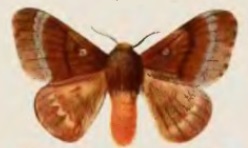
The olive bee-eater or Madagascar bee-eater is a near passerine bee-eater species in the genus Merops. It is native to the southern half of Africa where it is present in Angola; Botswana; Burundi; Comoros; Democratic Republic of the Congo; Djibouti; Eritrea; Ethiopia; Kenya; Madagascar; Malawi; Mayotte; Mozambique; Namibia; Rwanda; Somalia; South Sudan; Sudan; Tanzania; Uganda; Zambia; Zimbabwe. It is a common species with a wide range so the International Union for Conservation of Nature has rated their conservation status as "least concern".

Calliandra is a genus of flowering plants in the pea family, Fabaceae, in the mimosoid clade of the subfamily Caesalpinioideae. It contains about 140 species that are native to tropical and subtropical regions of the Americas.

T wave alternans (TWA) is a periodic beat-to-beat variation in the amplitude or shape of the T wave in an electrocardiogram TWA was first described in 1908. At that time, only large variations could be detected. Those large TWAs were associated with increased susceptibility to lethal ventricular tachycardias.

Electrical alternans is an electrocardiographic phenomenon of alternation of QRS complex amplitude or axis between beats and a possible wandering base-line. It is seen in cardiac tamponade and severe pericardial effusion and is thought to be related to changes in the ventricular electrical axis due to fluid in the pericardium, as the heart essentially wobbles in the fluid filled pericardial sac.

Eupterotidae is a family of insects in the order Lepidoptera with more than 300 described species.

Pulsus bigeminus is a cardiovascular phenomenon characterized by groups of two heartbeats close together followed by a longer pause. The second pulse is weaker than the first. Look for a pattern of what appears to be a relatively normal QRS complexes, each followed by a smaller, abnormal one. The smaller beat is palpated as either a missing or an extra beat, and on EKG resembles a PVC. These PVCs appearing every other beat are also called extrasystoles.

Pulsus alternans is a physical finding with arterial pulse waveform showing alternating strong and weak beats. It is almost always indicative of left ventricular systolic impairment, and carries a poor prognosis.

Kessleria is a genus of moths of the family Yponomeutidae.

Cotana lunulata is a moth in the family Eupterotidae. It was described by George Thomas Bethune-Baker in 1904. It is found in New Guinea.

Melanothrix is a genus of moths in the family Eupterotidae.

Cotana postpallida is a moth in the family Eupterotidae. It was described by Walter Rothschild in 1917. It is found in New Guinea.
Melanothrix latevittata is a moth in the family Eupterotidae. It was described by Karl Grünberg in 1914. It is found on Borneo. The habitat consists of upper montane forests.
Melanothrix leucotrigona is a moth in the family Eupterotidae. It was described by George Hampson in 1893. It is found in Myanmar, the Mergui Archipelago and Peninsular Malaysia.

Melanothrix nymphaliaria is a moth in the family Eupterotidae. It was described by Francis Walker in 1866. It is found on Java, Sumatra and Borneo and possibly also in the Philippines. The habitat consists of lowland forests.
Melanothrix semperi is a moth in the family Eupterotidae. It was described by Rothschild in 1917. It is found in the Philippines (Mindanao).
Melanothrix fumosa is a moth in the family Eupterotidae. It was described by Swinhoe in 1905. It is found on Borneo.
Melanothrix philippina is a moth in the family Eupterotidae. It was described by Rothschild in 1917. It is found in the Philippines.
Melanothrix sanchezi is a moth in the family Eupterotidae. It was described by Schultze in 1925. It is found in the Philippines.
Phyllariopsis brevipes is a species of large brown algae, found in the subtidal zone in the Mediterranean Sea. It is the type species of the genus. Unlike other large brown macroalgae, it has a habitat requirement to grow on the living thalli of the crustose red alga Mesophyllum alternans.










